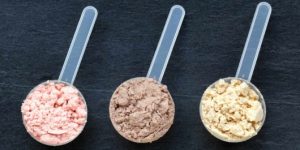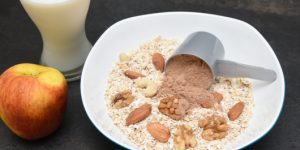Juicing is a great way to get the most out of your foods. Normally when we eat foods such as fruits and vegetables, we throw away parts that contain vital vitamins and minerals. By juicing foods, all these elements are kept and ready for consumption.
Making your own juices at home is one of the best ways to promote a healthy lifestyle for you and your family.
Ways to Include Juicing in Your Diet
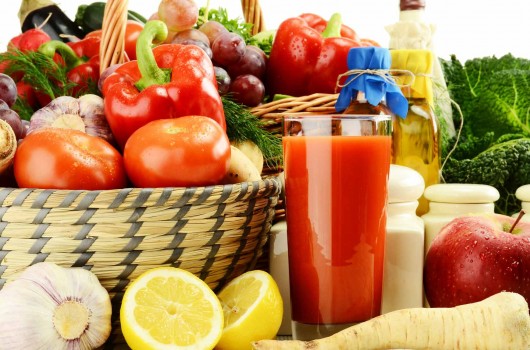
If you’re going to start a juicing diet, it may be helpful to start with a few days of eating primarily fruits and vegetables before going over to all-juice. This helps reduce dependence on sugar, flour, and other common diet staples that can make a juice diet difficult to swallow.
For those who are ready to start your juicing, here are some useful tips of how to do it easily:
Right Juicer Is the Key
When it comes to juicing, one thing that you want to keep in mind is that one of the most important and difficult parts is choosing the juicer that you are going to use. It is important to buy one that will suit your needs, but also remain within your price range. Check out our article: How to Buy a Juicer: 5 Great Juicers Reviewed.
Remember that vegetable and fruit remnants left on a juicer after juicing have the potential to grow mold quickly. Cleaning it quickly helps stop the growth of mold. Dismantle the juicer clean the parts and rinse with water until clean. If you must use a detergent use one that is very mild. Regular cleaning in this fashion will increase the life of your juicer as well as make your life healthier.
The Freshest, the Best
When making the juice, make absolutely sure to get fresh, healthy fruits. Look for produce that have a full color, are firm to the touch, and have green, leafy tops. Avoid fruits with the following signs:
- rubberiness
- limpness
- wilted tops
- excessive cracking
Mix in Vegetables
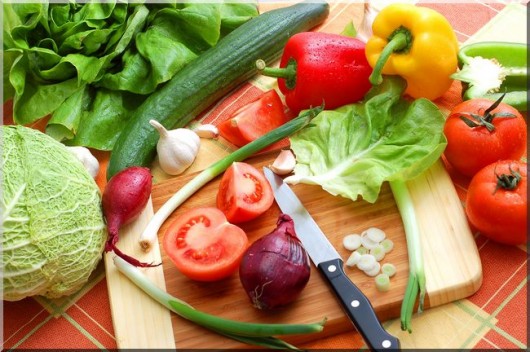
Try vegetables mixed with your favorite fruits in your juicer. Many vegetables are easy to juice. They can add important vitamins and minerals to your juice as well. In addition, using vegetables can cut down on the calorie count of your juice, which in turn, makes it a better diet option.
Vegetables that you do not like alone might end up tasting great to you when mixed in a juice with other flavors. This is a great way to get nutrients you otherwise wouldn’t.
Never add more than one new vegetable to your juice mix at a time. If you do not like the taste of the juice, or your digestive system does not react well to your new juice blend, you will not know what vegetable to reduce or avoid if you add a bunch of new veggies in the same batch.
Juicing vegetables allows you to quickly and easily get the most nutrients out of them that you possibly can without spending a ton of time on them.
Making healthy juice from vegetables is wonderful, however, do not go overboard with variety. Stick to using 2-3 vegetables in your juice blends and incorporate apple into the mix. You will minimize the amount of flavors you are trying to combine and the apple will add the right amount of sweet to the mix for extra enjoyment.
Freeze Some For “Rainy Days”.
Juicing is a lifestyle you dedicate yourself to, and you will notice if you miss a day. So if you’re not able to buy some fresh fruits for your juice, keep some in the freezer or even freeze some juice to tide you over.
Store the Juice Right
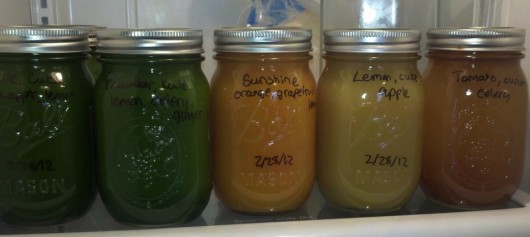
If you must store your juice in the fridge, add a tablespoon of lemon juice. It shouldn’t have a major effect on the flavor, but it will keep the juice from becoming discolored as it sits, creating a more appetizing effect. Always try to make your juice just before you drink it, for maximum health benefits.
Choose a container that is airtight. Label your juice so that you remember what you are drinking, and enjoy!
REMEMBER!
Healthy juice is best at room temperature, so make sure to take the produce out of the fridge for a little while before you make the juice. Drinking cold juice can shut slow down the digestive system.
Buy Fruits in Bulk.
Go to local farms with your friends or family and purchase in bulk to get larger discounts. Many items can be kept in a cool, dark place for longer periods of time. Apple farms, for example, will sell you bushel after bushel for decreasing costs per pound. So, load the back with apples, and share with everyone! They don’t have to be juicers to enjoy fresh produce.
Though, don’t buy too many fruits and vegetables at a time that spoil quickly. You might end up buying much more than you will use, and the extra food will decay and go to waste. Experiment with different amounts to see how much juice you drink a day, so you know how much produce you have to buy in advance.
Safe For Diabetic
Are you diabetic? Juicing can still be for you! You can juice so many different items that you’ll always be able to have a selection that does not contain too many carbohydrates or a large dose of sugar. You can also include milk or yogurt in your drink to up your dairy intake.
Chill Out
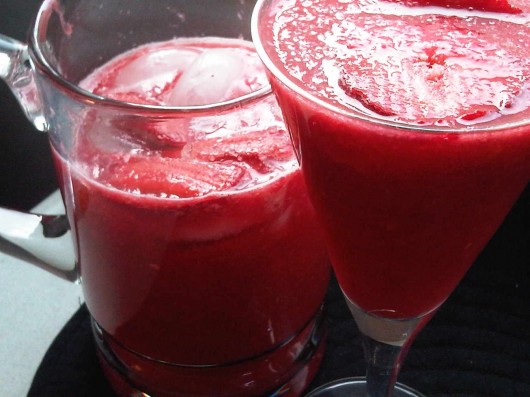
What a tasty and quick way to chill out trying adding chopped ice to your juice to make it a cool treat in the summer! It’s like drinking a smoothie.
Bananas and papayas do not seem to do well in a juicer. You can still use them with juice, but it is best to stick them in a blender. They are very thick, and tend to work better when making fruit smoothies or any type of frozen dessert that you make.
Make It Smooth
If you want your juice to be very smooth and free of pulp, try using a coffee filter or cheese cloth to strain it after it comes out of the juicer. Also keep in mind that the softer the produce used, the thicker the juice tends to be for example, tomato juice.
Make It a Habbit
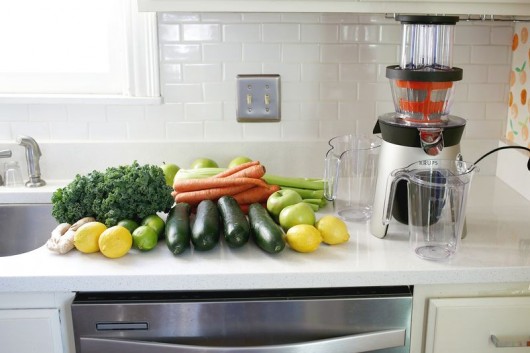
If you are trying to make sure you stick with your healthy new juicing habit, make sure that the juice machine stays on your kitchen counter at all times. Out of sight, out of mind is especially true when it comes to trying to form new habits. By making sure your juicer is always in plain sight, you will be more likely to remember to use it every day.
Add New Flavors
Wheat-grass has many health benefits such as cleansing the lymph system, and removing toxic metals from your cells. You can only ingest wheat-grass through juice, so juicing can be extremely beneficial. Be careful because wheat-grass does have a very strong taste. It is best to start out a little at a time. Each time you juice, just gradually add a little more.
Try wheatgrass with apple/ginger/orange juice, but you can come up with a hundred more recipes. Give it a try!
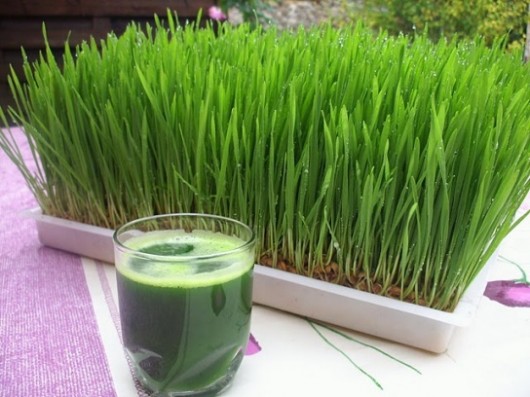
Get adventurous with your juicing ingredients! Why not try grapefruit or add in a little ginger for some zip! Other items to try are celery, parsley, beets, bell peppers, and leafy greens! You never know what you might end up liking.
Try spices like cayenne or cinnamon, or nutrition-packed additions like spirulina. You can even put a little honey and yogurt in once in a while for a sweet, smooth treat. Make sure to use only non-fat, unsweetened dairy to keep the resulting produce healthy.
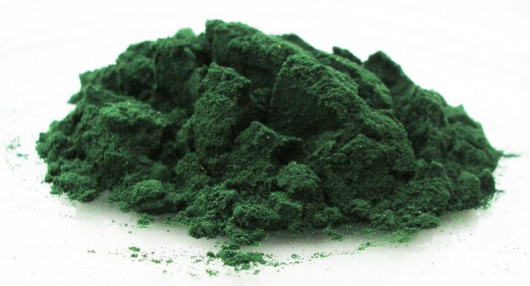
There are a million-and-one recipes of items to include in your juicer. How about a combination like apple with carrot and ginger, or celery and pear. My favorites are apple with lemon and pear, apple with cinnamon and honey, and banana with mango and orange. Try new ideas to find your own favorites!
If you’re making carrot juice, here’s a little tip to give it a better, more interesting flavor. Try adding cilantro! It has a nice, refreshing, satisfying aspect that compliments the sweetness of carrot juice.
Buy Local
Try to use locally-grown fruits and vegetables in your juicing. The best option is to use produce that you’ve grown yourself. Every mile that a piece of fruit needs to be transported to get to you increases the carbon footprint of your glass of juice. It also increases the chance of your produce becoming contaminated with bacteria or chemicals.
Buying fruit and vegetables for your juicing can be easy by using all five senses to find the freshest produce to bring home. Sniff the item and make sure it smells good, like you would want to eat it. Squeeze it and feel if it’s too hard or too soft. Look it over for imperfections, and then take it home and taste a bit. Enjoy!
Play With Nutrients
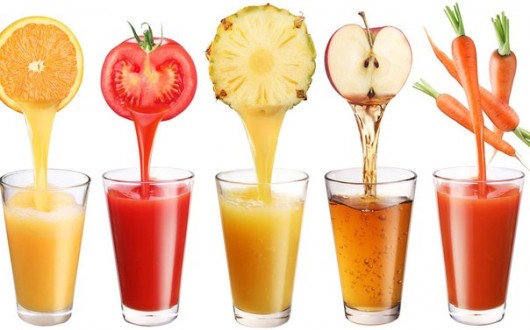
Use color to show you the way. Each vegetable or fruit juice color, from orange to red to purple, supplies the body with different vitamins and nutrients. Employ a diversity of colors for a complete culinary experience.
Tricky Citrus Fruits
Be aware that citrus fruits do not always work well in all juicers. Because of the consistency of the pulp in the fruit the juicer can get clogged with the pulp or rind. If using a standard juicer, peel the fruit and cut into small pieces; otherwise get a citrus juicer that you will use for these types of fruit specifically.
Peel citrus fruits before you put them in your juicer. The thick peels of citrus fruits will make your juice taste unpleasant, provide no real health benefit, and can even be harmful. The greatest benefit from citrus fruits comes from the white pith just below the peel, so be sure to retain that when juicing.
Save Your Money
You don’t have to spend a fortune on fresh juicing produce as long as you shop in season. Berries are great in the summer, but will cost you an arm and a leg to buy in the winter, so skip them until the prices drop again. Apples last all winter, so feel free to buy a few bushels and keep them in the garage.
Add Fats
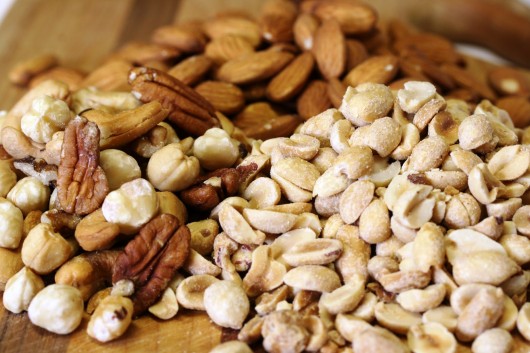
Fats are still important while juicing. Nuts and seeds contain not only necessary fats but proteins as well. Blending nuts and seeds with your juices will give the juice extra protein, necessary amino acids which help the immune system and the brain and the good types of fat your body needs.
Research Before Juicing
Before you get started juicing, do a little bit of research on the different varieties of fruits and veggies available. There are a lot of variances in the nutrients that are found in each of the fruits and veggies. Your best option is to mix items that will provide you with a variety of vitamins and minerals, ones that will meet your daily requirements. You will not just be supplying your body with proper nutrients, but you are going to find some very interesting blends.
Get Rid of All Harmful
Remove pits and seeds from your fruits before juicing them. Hard pits, like those found in peaches, will leave unpleasant chunks in your juice and can damage the blades of your juicer. Other seeds, such as apple seeds, may actually contain chemicals that are harmful. It’s best to remove them beforehand.
Kids and Juicing

If your kids do not like vegetables much, then juicing is a great idea to help them have an easier time eating them. Only few children enjoy eating vegetables. In order to keep children eating their vegetables, secretly add them into the juicer with the fruits to make a discreet and tasty drink.
Use Organic
Use organic fruits and vegetables in your juicing. Organic fruits and vegetables have not been exposed to the chemical fertilizers and pesticides used in traditional farming. If you cannot use organic produce, be sure to peel everything before you put it in the juicer. The peel will contain most of the harmful chemicals.
Experiment With Leafy Greens
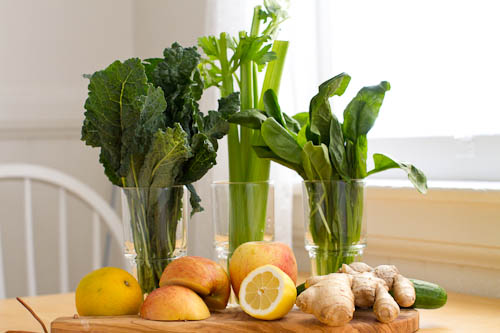
When you’re making a juice from dark, leafy greens, try adding in a little cucumber. Leafy greens tend to be quite strong and not taste all that great. If you add in cucumber, you won’t just hide the bad taste, but also add a delicious new flavor. Cucumber is also very nutritious, especially if you don’t peel it beforehand.
Crumple up leafy greens, such as spinach, into tight balls before putting them in your juicer. Your juicer is primarily designed to deal with solid fruits and vegetables, not thin leaves. You will get better results from your juicer if you simulate this effect by squashing your leafy greens before juicing.
Healthy Juice Mixes
[table]| Health Benefits | Fruit and Vegetable Mixes |
| Boost and cleanse our system | Carrot-Ginger-Apple |
| Prevent cancer, reduce cholesterol, and improve stomach upset and headache | Apple-Cucumber-Celery |
| Improve skin complexion and stops bad breath | Tomato-Carrot-Apple |
| Avoid bad breath and reduce internal body heat | Bitter Gourd-Apple-Milk |
| Improve Skin texture and moisture and reduce body heat | Orange-Ginger-Cucumber |
| To dispel excess salts, nourish the bladder and kidney | Pineapple-Apple-Watermelon |
| To improve skin complexion | Apple-Cucumber-Kiwi |
| To regulate sugar content | Pear-Banana |
| Clear body heat, counteract toxicity, decrease blood pressure and fight oxidization | Carrot-Apple-Pear-Mango |
| Rich in Vitamin C & Vitamin B2 that increase cell activity and strengthen body immunity | Honeydew-Grape-Watermelon-Milk |
| Rich in Vitamin C, E, and Iron. Improve skin complexion and metabolism | Papaya-Pineapple-Milk |
| Rich in vitamin, it prevents constipation | Banana-Pineapple-Milk |
Tasty Recipes
Pink Ice
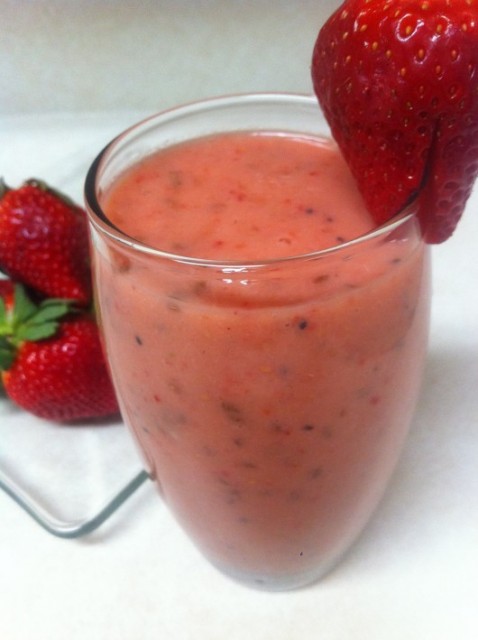
1 Banana
5 Strawberries
1/2 Grapefruit
1/2 Orange
Mixed Fruit Explosion
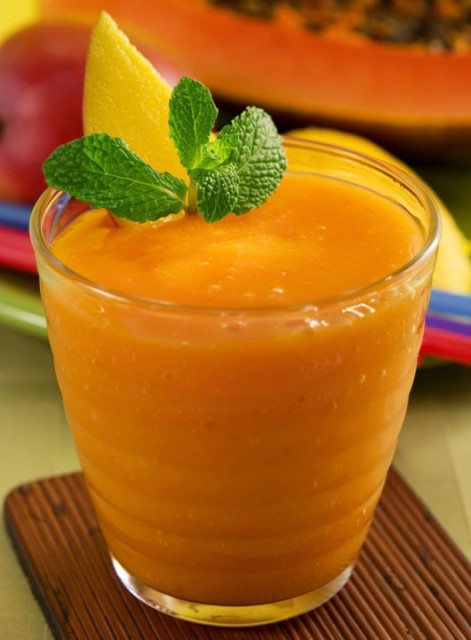
1 Banana
1 Kiwi
1/2 Mango
1/2 Papaya
1/2 Orange
Happy Drink
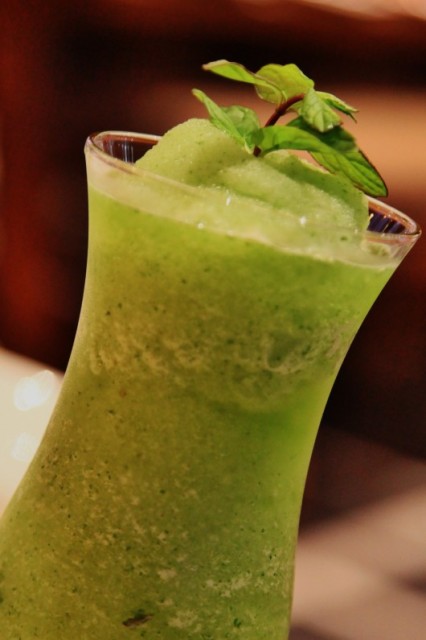
1 Banana
1 Kiwi
1 Orange
You can have a healthier diet and a delicious beverage with juices. Giving your body all of the nutrients it needs is easy by enjoying a tall glass of fresh juice you’ve made with a varied selection of fruit and vegetables. Enjoy your juices and your healthy life!

